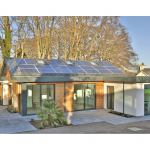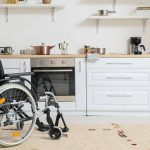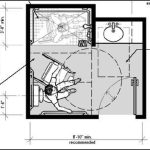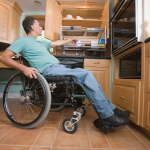The Stages of Aging
As we grow older, our bodies and minds go through various changes that can affect our daily life and well-being. Understanding the different stages of aging and how to cope with the challenges they bring is crucial to maintaining our independence and quality of life. In this article, we will provide an overview of the different stages of aging and practical tips for aging in place, so that you can make informed decisions about your care and well-being.
What Are the Five Stages of Aging?
Aging is a natural process that begins in early adulthood and continues throughout our lives. Understanding the different stages of aging and how to cope with their challenges is essential to maintain our independence and quality of life. Though many people look at the stages of life by age, always remember we are as old as we feel. The stages of aging can be broadly categorized into five main phases:

Early Adulthood (18-39 years old): This phase is characterized by establishing our careers, relationships, and sense of identity. Our bodies are at their peak, and we have plenty of energy and vitality. However, it is also a time when unhealthy lifestyle habits such as smoking, poor diet, and lack of exercise can set in, leading to chronic diseases later in life. Therefore, adopting healthy lifestyle habits during this phase is crucial to prevent future health problems.
Mid-Adulthood (40-49 years old): During this phase, we start to notice more significant physical changes, such as a decline in our eyesight and hearing, slower metabolism, and a decrease in bone density. Women may experience menopause during this time, and both men and women may experience age-related sexual dysfunction. It is important to maintain a healthy diet, engage in regular exercise, and maintain a healthy weight during this phase.
Late Middle Adulthood (50-64 years old): This phase is characterized by the continuation of physical changes that began in mid-adulthood, including a higher risk for developing chronic diseases such as heart disease, cancer, and arthritis. Maintaining healthy habits such as exercising regularly, eating a balanced diet, and avoiding smoking and excessive alcohol consumption can help prevent or manage these chronic diseases.
Late Adulthood (65-74 years old): This phase is often referred to as the “young-old” stage and is characterized by retirement, travel, and new hobbies. However, it can also come with significant health challenges such as chronic diseases, memory loss, and mobility issues. Staying socially connected, remaining physically active, and seeking support from loved ones or professionals can help manage these challenges.
Advanced Old Age (75+ years old): This phase is characterized by increased frailty, cognitive decline, and a higher risk of chronic diseases such as dementia and Alzheimer’s disease. However, it is still possible to maintain a good quality of life during this stage by staying socially connected, remaining physically active, and receiving appropriate medical care.
Understanding the different stages of aging and how they can affect our physical and emotional well-being can help us make informed decisions about our health and aging journey.
Understanding the stages of aging can help us make informed decisions about our health and well-being, and prepare for the challenges that come with each phase.
Coping with the Stages of Aging
While the different stages of aging may bring physical and emotional changes, there are practical tips that can help manage the challenges of aging. Here are some tips to cope with the stages of aging:
Stay Active Regular exercise can help maintain physical and mental health, boost energy, and reduce the risk of chronic diseases. It is essential to find an exercise routine that fits your needs and abilities. Walking, swimming, and yoga are low-impact exercises that can be beneficial for the stages of old age. However, it is crucial to consult with a healthcare provider before starting any exercise program.
Eat Well A balanced diet with plenty of fruits, vegetables, whole grains, and lean proteins can provide essential nutrients and reduce the risk of chronic diseases. It is also essential to drink plenty of water to stay hydrated. Limiting alcohol and caffeine consumption can also help reduce the risk of dehydration.
Stay Socially Connected Socialization can reduce feelings of loneliness, depression, and cognitive decline. Joining clubs or volunteering can be a great way to meet new people and stay active. It is essential to maintain close relationships with family and friends and to communicate regularly.
Seek Support Asking for help from loved ones or professionals such as caregivers, therapists, or home health aides is vital in managing the challenges of aging. These professionals can provide practical and emotional support to help older adults maintain their independence and improve their quality of life. It is essential to research and communicate with professionals and loved ones to find the best support system.
Aging in Place: Practical Tips
Aging in place is an increasingly popular option for older adults who want to maintain their independence and avoid moving to assisted living or nursing homes. However, it requires careful planning and preparation to ensure safety and comfort. Here are some practical tips for aging in place:

Aging in Place Home Modifications: Making changes to the home can improve safety and accessibility. This may include installing grab bars in the bathroom, ramps or stair lifts, and removing tripping hazards such as loose rugs or cords. Other modifications may include adjusting lighting and temperature controls, or rearranging furniture for better mobility.
Telehealth Services: Technology such as remote monitoring, video conferencing, or mobile apps can help manage chronic conditions and reduce the need for in-person visits. This can be especially helpful for those who live far away from medical facilities or have limited mobility.
Home Care Services: Professional caregivers can provide assistance with activities of daily living such as bathing, dressing, and medication management. They can also provide companionship and emotional support, as well as help with household tasks such as cleaning and cooking.
Community Services: Local organizations such as senior centers, transportation services, and meal delivery can provide socialization and support. They may also offer educational programs, fitness classes, and other activities to promote well-being and independence
By taking advantage of these resources and services, older adults can maintain their independence and quality of life while aging in place. It’s important to plan ahead and involve family members and healthcare professionals in the decision-making process to ensure safety and comfort.
How Much Less Is Aging in Place vs. Long-Term Care?

Investing in home modifications for aging in place can be a smart financial decision, especially when compared to the cost of assisted living. According to SeniorLiving.org, the average monthly cost for assisted living in the United States is $4,000, with some states like New Jersey reaching as high as $6,000 per month. Over just three years, this can add up to a total cost of $144,000 to $216,000.
On the other hand, investing in home modifications and in-home care can be a more cost-effective option for aging in place. Lori Bellport a Certified Aging in Place expert notes that an ADA-compliant bathroom can cost between $25,000 to $50,000. While this may seem like a large investment, it’s important to consider the long-term benefits.
Modifications such as turning spaces, walk-in bathtubs, lowered sinks, and widened doorways not only improve safety and function, but also enhance quality of life and allow for independent living with dignity.
When you add in the cost of in-home care, which averages around $23 per hour, and assume 20 hours of care per week, that comes to a monthly cost of around $3,120. Over the course of three years, that’s a total cost of $112,320. Adding the remodel to the cost of facility care you can see that over three years they are similar.
While this is still a significant amount of money, it’s important to consider that you’ll have the added benefit of remaining in your own home and community, surrounded by familiar people and surroundings. Plus, after three years, you’ll have paid for the home modifications and some in-home care, whereas with assisted living, the costs continue to add up year after year.
Take Control of Your Aging Journey
As we age, it’s important to take control of our aging journey and plan for the future. By understanding the different stages of aging, practical tips for managing them, and options for aging in place, we can maintain our independence and quality of life.
Aging in place is a popular choice for older adults who want to remain in their own homes and communities, but it’s important to make the necessary modifications to ensure safety and accessibility. Home modifications, telehealth services, home care services, and community services are all great options for aging in place.
If you or a loved one is considering aging in place, it’s important to reach out to local resources or professionals for help. They can provide information, resources, and support to help you make informed decisions about your care.
At Live in Place Designs, we specialize in helping older adults and their families navigate the challenges of aging and aging in place. Our team of professionals can provide customized solutions for your unique needs and help you maintain your independence and quality of life.
Don’t let the challenges of aging hold you back. Take control of your aging journey and reach out to us today for more information and support.
Originally published 2019 – Updated 4/9/2023






